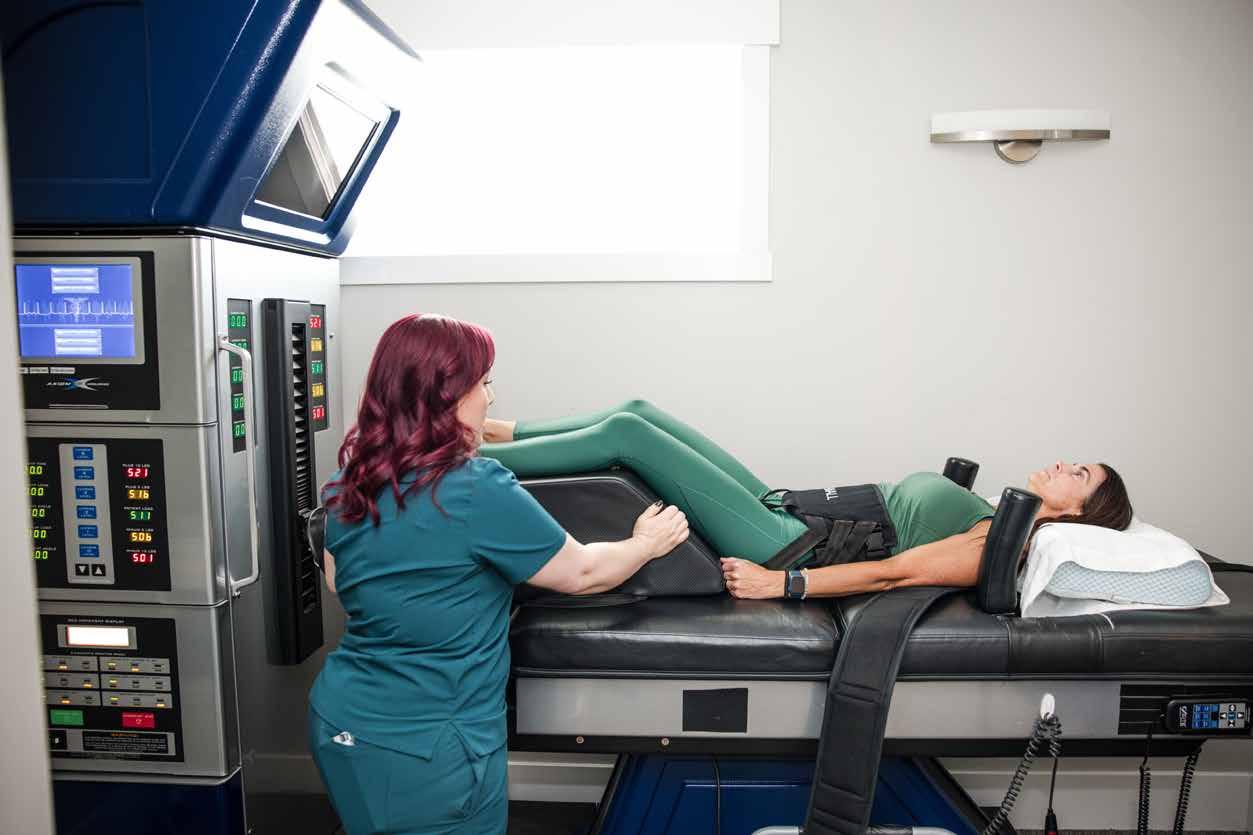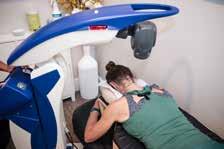See

theatre
“Les Miserables” coming this fall
more about your candidates in upcoming election Page 11





“Les Miserables” coming this fall
more about your candidates in upcoming election Page 11



By Julie Slama | j.slama@mycityjournals.com
For the past six years, Will Evershed has been making an impact in his community – and abroad.
The 2025 Bingham High graduate has logged more than 400 hours providing public community service. At his high school, he held several leadership roles, including sophomore class secretary, student body officer as a junior and senior class president. This last year, alongside his classmates, he dedicated significant time to fundraising efforts which supported students with disabilities at the Kauri Sue Hamilton School and helped fulfill a wish for a child through Make-a-Wish Utah.
Evershed also led a clothing drive benefiting Salt Lake City’s Orange Street Community Correctional Center, which supports women transitioning from incarceration back into the community.
“They needed 70 (winter) hats, 70 pairs of gloves and 70 scarves, so I reached out to my local community and got most of those items,” he said. “I ended up making all the scarves. It felt good and I’m grateful to be able to do this because many of these women don’t have anything to come back to.”
In July 2024, Evershed traveled to Nepal on a humanitarian mission.
“I was there for two and a half weeks with others, and we were building a dining hall for a local school because they didn’t

have one; they ate lunch in the classrooms,” he said. “This opened my eyes even more. There are people very less fortunate than we are and it’s good to give back.”
These efforts contributed to Evershed earning the Congressional Award and being congratulated by U.S. Rep. Burgess Owens. He achieved the program’s highest honor, the gold medal.
Established by the U.S. Congress in 1979, the Congressional Award recognizes youth between the ages of 14 and 24 for their initiative, service and achievement. Participants can earn bronze, silver and gold certificates or medals by meeting goals in four key areas: voluntary public service, personal development, physical fitness and expedition or exploration.
For his personal development hours, Evershed leaned into his love for theater and music, logging 200 hours.
“I did a lot of theater when I was in middle school. When I was the lead for ‘The Music Man,’ after school, I was there every day for about two hours rehearsing lines and singing. Since then, I’ve been playing the piano to keep up my skills,” he said.
He also completed 200 hours of physical fitness by participating in cross country and track throughout high school. His senior year highlights include a 17:13.9 finish in the three-mile race at the state cross country meet, along with spring track times of 2:06.9 in the 800 meters, 4:39.9 in the 1600 and 10:01.4 in the 3200.
“I ran for at least an hour after school every day. When I was injured, I was on the StairMaster, the elliptical or the rowing
From organizing a local clothing drive for recently released inmates to building a dining hall in Nepal, a Bingham High graduate donates 400 hours of service to make a difference. continued page 7








Holy Cross Hospitals have been trusted by Utah families since 1875.
For 150 years, Holy Cross Hospitals have cared for Utah families in their most tender, powerful, and vulnerable moments. From newborn checkups to post-op recoveries, we’ve seen generations through their highest highs and hardest days.
We’ve done it all with one purpose: to treat people, not just patients. We care for every person with personalized treatment powered by compassion and respect.
Our belief that we all hold the power to heal helps us provide care that spans generations and stands the test of time.
Learn more at mountain.commonspirit.org/holycross150.
“Do you hear the students sing?” Bingham thespians to perform the school edition of “Les Miserables” this fall.
By Julie Slama j.slama@mycityjournals.com
About 200 Bingham High students were expected to audition for a role in the school edition of “Les Miserables,” the school’s fall musical.
The show is scheduled for 7 p.m., Nov. 20-22 and again on Nov. 24 on the school’s stage, 2160 South Jordan Parkway, with a 2 p.m., Saturday matinee. Tickets are $8-10; more information is available on Instagram @bingham_theatre_company.
“Les Miserables,” based on Victor Hugo's novel, tells the story of ex-convict Jean Valjean and his struggle for redemption during social unrest in 19th-century France. It features iconic songs such as “I Dreamed a Dream” and “Do You Hear the People Sing?”
Theatre teacher and director Dave Martin chose the musical for its complex characters. His colleague, Christopher Hults, added, “This Utah favorite is a perfect match for us.”
Choir teachers Logan Bingham and Shayla Bentley direct music for the show.
This production follows the school’s new Shakespeare Showcase and Renaissance Faire.
The Shakespeare performance, featuring 30 students and coached by peers, included six pieces from “Richard II,” “Henry IV” and “Henry V.”
Hults said performing them in sequence helps audiences understand the context.
“We get to study one of Shakespeare's
most captivating and discussed characters, Falstaff, and three different actors play Falstaff in different scenes,” he said.
The Ren Faire included music, dancing, food, face painting and games.
Following the musical, the thespians will perform “Much Ado About Nothing” Feb. 25-March 2, 2026, with ticket prices $8-10.
“Last year's Shakespeare team saw it at Utah Shakespeare Festival and fell in love with it,” Hults said. “They swooned over the characters and some of the funniest scenes. I loved seeing them erupt with joy when we announced, ‘Much Ado.’”
Set in an Italian garden and courtyard, some performances will feature picnic-style seating.
The Theatre 4 productions company class will compete at region with the oneact ensemble “Our Place” by Terry Gabbard.
“It is a slice-of-life realism play, a collection of vignettes,” Hults said. “Both funny and tragic, it's about learning to let go. Students were moved when we read it together and it is an ensemble piece allowing each to highlight the skills they have honed in three years at Bingham High School.”
Public performances are planned for mid-March, pending rights approval.
The season wraps in April with a twonight spring showcase — written, directed and produced by Theatre 4 seniors — and the musical theatre class’s production, “The Drowsy Chaperone,” directed by Martin and running April 23-25. Tickets are $8-10.
“I performed it in 2010 in Hale Centre Theatre’s regional premiere and fell in love with the show,” he said. “It’s full of heart and comedy and encapsulates how musicals can become a part of our very core.”
Bingham’s improv team, now called “The Unaccompanied Miners,” performs
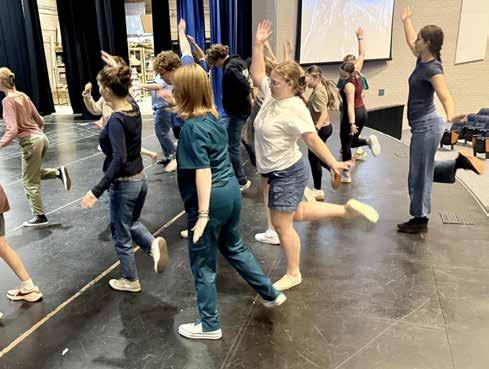
monthly starting in November. Tickets are $3. Founded in 2004, the team now studies with professional actor and improv performer Jackson Holiday. The team’s captain is Jensen Murry.
Each spring, they host an improv festival with workshops and performances attended by area schools and network with other schools’ teams year-round.
Bingham has a 13-member Theatre Council, led by President Florencia Taiba Barra, which meets weekly to support the theatre program while maintaining high academic standards.
Martin and Hults teach, direct and
guide the program, helping students develop professionalism, teamwork and time management — skills vital in today’s evolving theatre tech world. They also teach them theatre skills which translate into real life application.
“We do it because theatre skills are the skills that leaders of the future need,” Hults said. “We teach young people that they have a voice and how to use it. We teach them to tell a story, because stories provide meaning. We teach them listening, awareness and perspective-taking. We teach them that things don't go as planned, yet they must still go.” l
The South Jordan Journal is a monthly publication distributed directly to residents via the USPS as well as locations throughout South Jordan.
For information about distribution please email hello@thecityjournals.com or call our offices. Rack locations are also available on our website. The views and opinions expressed in display advertisements do not necessarily reflect or represent the views and opinions held by Loyal Perch Media or the City Journals. This publication may not be reproduced in whole or in part without the express written consent of the owner. © 2019 Loyal Perch Media, Inc.
Bryan Scott | bryan.s@thecityjournals.com
EDITOR
Travis Barton | travis.b@thecityjournals.com
ADVERTISING EXECUTIVES
Mieka Sawatzki | mieka.s@thecityjournals.com
Lindsay Andreasen | lindsay.a@thecityjournals.com
Jason Corbridge | jason.c@thecityjournals.com
Ryan Casper | ryan.c@thecityjournals.com
Marc Davis | marc.d@thecityjournals.com
Rack
Lydia Rice | lydia.r@thecityjournals.com 385-557-1022
EDITORIAL &
Stacey LaMont Ty Gorton SOUTH JORDAN
9500 South 500 West, Suite 205 Sandy, UT 84070
PHONE: 801-254-5974





























State’s top educator remains agile during shifts in education reform.
By Julie Slama j.slama@mycityjournals.com
Week one didn’t go as expected. Utah’s new State Superintendent of Public Instruction Molly Hart faced an unexpected challenge when President Donald Trump’s administration froze education funds that were set to be dispersed.
“It was surprising he froze funds that had already been approved through Congress,” she said. “I was anticipating changes, but I was anticipating them moving forward. So, when those changes happened a week into my tenure, it threw a wrench in the kickoff.”
Hart, who previously served as executive director of Summit Academy Schools for two and one-half years, hadn’t planned to follow in the footsteps of former superintendent Sydnee Dickson, who served for nine years. At Summit and as vice chair of the Utah State Board of Education, she felt she had found her place—working directly with students and leading through change.
“When opportunity comes, you got to answer the door,” said the veteran educator from Sandy. “I didn’t ever really see myself leaving a school setting where there were kids and I could be involved in an actual school day. I thought I hit the sweet spot, but opportunity knocks and to make a difference at this level, and to make things happen, how do you turn that down? It’s an exciting opportunity.”
It’s now been two months since Hart, a former teacher who served as principal at Mt. Jordan and Albion middle schools, was sworn in as state superintendent. She and Dickson collaborated to ensure a smooth transition in June into the K–12 summer break.
“I stay moving from 7 a.m. to 7 p.m. I haven’t even unpacked all my boxes. It’s back to school for USBE, just as it’s back to school for schools,” Hart said.
City Journals posed questions to Hart about key initiatives and pressing issues in education.
What was it like when the government
The president was clear about his priorities all the way along. We did eventually get those funds, so districts are able to pay their summer programs’ and afterschool programs’ people.
A central tenet of Trump’s plan is to eliminate the federal department of education. Is it going to impact some of the programs, such as Title I schools and others?
There are three big federal education programs: the free and reduced lunch program, the Title I program and IDEA (Individuals with Disabilities Education Act) or special education. USDA already co-manages the lunch program along with department of education. The plan for the others, at one point, was to move them to other agencies, and the funding was to continue in some form. But other Title programs, like Title II (supporting effective instruction), Title III (language instruction for English learners and immigrant students) were the ones that were frozen. We’re now looking at the budget process moving forward for when we get federal funds. There are a lot of different timelines that intersect, and the U.S. Senate pushed back against some of the president’s proposals, so it’s just an evolving story with a shifting landscape. We have to stay agile, consider the information we have at any given time and be ready to improvise.
If the federal department of education fades away, is Utah OK to run our education system?
Many people don’t think it will completely fade away. The department of education may still exist, but it could be much smaller in size and scope. It would take congressional action for the department to “disappear.” Saying that, it was nowhere on my bingo card that funds would be frozen. And, there was nowhere on my bingo card that those funds would be unfrozen. What’s extraordinary about these times is the different paths and the uncertainty of the next action. The best thing I can do is help others prepare for contingencies. Utah is well positioned to manage and keep consistent educational opportunities for kids. The problem is always where the money comes from, when the money comes, and how the money comes, so whether it comes from the state or from local, or from federal, and how it comes, what kinds of strings

are attached, what kinds of choices we get to make, and how it’s administered. It’s a new game — and all those spaces are changing at the same time. At the end of the day, our teachers and principals are going to open schools this fall, and they are going to give students the best education out there.
Share your top priorities.

Molly Hart, now the state superintendent, received directions how to drive the excavator into the former Mt. Jordan school building to make way for a new school. (Julie Slama/City Journals)
It’s important to me that we get the various constituents together. There’s been a fracturing of communication in education, and we’ve become very polarized needlessly. As state superintendent, I can bring disparate groups of people together and create synergy. It’s important the USBE is responsive, efficient and meeting the needs of the various stakeholders and also, communicating accurate data and information to the legislature, to the field and throughout the agency. It’s important we find ways to increase student achievement and knowledge and students come away knowing how to solve problems and knowing how to meet the needs of communities in the future. That is our goal and it’s important to me that stakeholders come together and keep that in our sights. We’re an agency of the government. We serve the people. We are servant leaders. We need to do that efficiently and without wasting resources, and we need to do it transparently.
Utah has 70,000 students. Many teachers and principals are concerned about low attendance. How can USBE help? Attendance is one of those things that can’t be solved with any one single approach. We’ve got to engage families and parents and understand why students aren’t coming to school and figure out where that disconnect is, and work on the experiences in school so that it’s a place students understand the need
and what they get out of being there. It’s got to come from not just the education community, but communities at large and at the individual level. It is individual students and their parents making a choice each day whether or not they’re going to attend. We’ve got a toolbox to support districts as they identify barriers and work to remove them. As a former principal, I do know there’s a lot a school can do, but I also understand the limitations of what a school can do and where a district or a state agency or the legislature or a community agency can have considerable impact on student rights and attendance rates. One thing we can do is look at schools at higher attendance rates and figure out what’s different between those and schools where attendance is an issue. There’s just a lot packed into attendance. It’s not simply missing a resource like a textbook. We need to look at everything. Does it have to do with transportation? Does it have to do with illness? Does it have to do with online learning? Is it a family priority or is there a barrier? Could it also be a data issue? There are a lot of questions to be answered.
What are some challenges facing our students in schools?
The changing workforce and what the workforce is going to need and what students are going to need to be prepared for the workforce is a challenge. Education spends a lot of time working with workforce, higher ed and workforce services industry partners to understand their needs, what they’d like to see our graduates be equipped with. A couple years ago, students were studying computer programming or data science and there were 1 million jobs. Well, here comes AI, and maybe some of those pieces can be outsourced, and the data scientist needs to
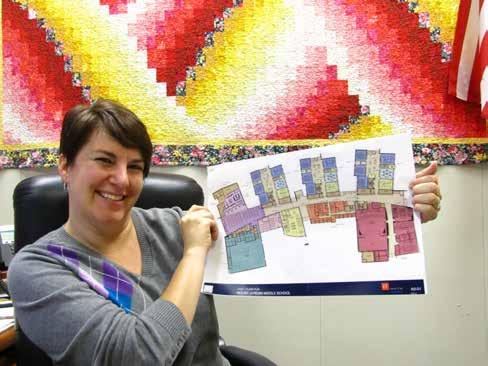
continured from front page
machine,” he said.
The final requirement for the award was to plan and complete an extended adventure. Evershed and his older brother John, a previous Congressional Award recipient in 2021, organized a week-long trip to Colorado.
“It was during COVID, and we planned and toured all the national parks in Colorado with my family. On the way back, we hiked Delicate Arch (in Arches National Park). We planned all the meals and what we were going to do each day,” he said.
He submitted his application in Janu-
ary 2025 and received confirmation in April. Shortly before departing on a church mission to Ethiopia, he met Owens in person.
“I tried on his Super Bowl ring on my ring finger, but I’m sure I could fit my thumb in it,” he said. “Working on this award allowed me to find things I love and set and accomplish goals. It takes a lot of time and energy, but I learned I can do anything I set my mind to. I’ve already started using that mindset and goal setting with learning the Amharic language they speak in Ethiopia. I’ve been working on it a bit every day and soon I’ll be able to understand and speak it to accomplish my goal.” l
Southhave a whole different set of skills. That rate of change is accelerating, so it’s always a moving target. There’s a lot of movement of students geographically and making sure students information get from point A to point B safely, so there’s continuity in services and students can pick up where they leave off, pick up in one place where they leave off in another. That’s a challenge as well.
You have said as an educator, you love hearing from parents, getting feedback and having those conversations. How are you going to do it now?
I’m working on creating listening groups and listening tours. As the school year gets started, I’ll be traveling around, coordinating and attending focus group meetings, along with state board members and legislators and community partners and districts, intentionally hearing those (parents’) voices and asking those questions. My plan is to ask the local legislators, the local board members and the state board member to be part of it and make sure as many people want to attend, can attend. There would be two meetings in the same community — one to listen to parents and hearing what they have to say, and then a second, listening to teachers and educators to get feedback there. (Once set, the schedule will be posted on the USBE website and communicated through local districts and through school community councils.)
Utah spends less than $10,000 per student (ranked last in the country). Is more needed? If so, how are you going to get more and what is it needed for?
That is a huge question. We have to live within our means and if that’s what we get, then that’s what we get. We can’t spend more. Of course, we could use more, but it’s government money, which means it came from the people, so every time we ask for more,
we’re asking people for it from their wallet. What’s most important is that we’re using the money we do have in the best way possible. I can ask, ‘What are we getting for the money that we do spend? Are there things we’re spending more on, that maybe were needs of the past, but are not current needs?’ We need to make sure money is going to the right places. We want to use the money we do have in the best way possible for the best outcome to set up our students for success, whatever success looks like for them and their families.
Utah students are pushing graduation rates close to 90%; how does that compare to national standards?
It’s amazing. When I go to national activities or conferences or gatherings, Utah has the envy of a lot of states. At a national conference, one of our staff members shared our teacher retention rate (91% average retained in a single year) and people in the room gasped. We are doing really great things in Utah and I’m proud of the work we do in our communities and at our state level, but you just don’t settle. You just don’t. We’re going to keep on doing great things for our kids and as new situations and new realities emerge in our communities and in our workforce, then we adjust our practices accordingly. We keep looking forward for those opportunities and those teachable moments.
Utah is ahead of the national average on test scores. Can Utah students do better?
I’m very proud of the work our families and students do. Of course, we can do better, and, of course, I want them to do better and I’m going to push them to do better. There’s always room to grow. I like to be a little relentless with pushing everyone to be better; we don’t ever quit on kids. We keep moving forward and putting one foot in front of the other. I’m never going to say, ‘We’ve arrived’ and ‘It’s good enough.’ l
Jordan Mayor Dawn Ramsey has been presented Salt Lake Community College’s Distinguished Alumni Award, which honors SLCC graduates and former students for their service to the community. She was one of two honorees for the annual award. Kearns High principal Daniel Stirland received the male alumnus award.
In its SLCC Magazine, Ramsey said she experienced SLCC at two very different times–once when she was just a few years out of high school, and later when she returned as a mother of six. She earned an AS degree in general studies in 2017, then completed a bachelor’s degree at BYU in family science with an emphasis in political science and civic engagement leadership.
“I chose to take a break from my education that unexpectedly lasted 20 years,” she said in the magazine article. “I cannot imagine there ever was a nontraditional student as excited as I was to be back in school.”
It was shortly after graduating from SLCC that she was elected the first female mayor of South Jordan, a position she’s held for two terms, and is running again this year.
SLCC said the Distinguished Alumni Award is the highest award the college bestows on alumni. l
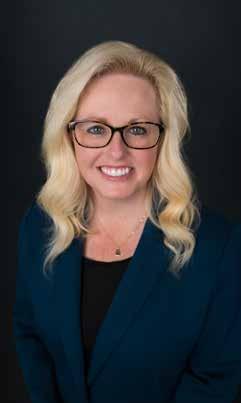





Hales trumpet skills took him to the Lincoln Center in New York City.
By Laura Crapo l.crapo@mycityjournals.com
Sometimes things just click, which is exactly what happened for South Jordan resident Jack Hales. He practiced and trained with the Caleb Chapman’s Soundhouse long enough to be part of an unforgettable trip to New York. That alone is remarkable, but getting to play with a world-renowned fellow trumpeter took things to a whole other level.
“During this summer, I had the opportunity to play at the most esteemed jazz performance center in the world, the Lincoln Center, located in New York City,” Hales said. “I also play the trumpet and even had the opportunity to play a duet with Wayne Bergeron.
“I managed to meet him via a highly esteemed program in Utah called Caleb Chapman’s Crescent Superband [or Soundhouse]. This band was traveling to play with him and I was invited to play with them as well. I was invited because of my previous repertoire in music and some connections I had within the band.”
Hales has been playing the trumpet since sixth grade, so for about seven years.

He hadn’t been with the Caleb Chapman’s Soundhouse long before this remarkable opportunity came along. It was just about six months or so, but that was still long enough for a very good experience.
The Caleb Chapman’s Soundhouse was founded by Chapman in 1998 in American Fork. Their website claims they are the most award-winning youth program in the nation. They have created a successful formula for training young musicians. Musicians ages 10 to 18 are grouped into bands based on the interest of the musicians. Each band meets for a weekly 2-hour rehearsal. They then showcase their work at a professional level. Many Soundhouse graduates receive scholarships and can be found working with popular bands.
The Lincoln Center consolidated complex was built in 1962. It was founded to make the performing arts accessible to the masses as well as to elites. It also marked New York City as the cultural capital of the United States. When realizing he would have the privilege of playing in the revered Lincoln Center, Hales understood its significance. To him, it is the most esteemed jazz performance center in the world.
Likewise, Hales considers Wayne Bergeron as one of the best musicians of this generation. Bergeron is an American trumpeter who was born in 1958 in Connecticut then grew up in California. He

started playing the French horn and thanks skilled teachers for fine-tuning and molding his musical talent. He soon caught the ear of celebrated musicians and film makers. He is currently one of the most sought-after musicians in the world.
Bergeron’s list of recording credits is chock full of famous singers including Ray Charles, Barbra Streisand, Beyonce and many more. He has worked on over 500 very successful TV and motion picture soundtracks. Having a connection with Bergeron will put South Jordan resident Hales on the right track. l

and relay successes at state in both the boys and girls
By Brian Shaw b.shaw@mycityjournals.com
It is not an everyday thing that a swim team has a dozen returning seniors.
New Bingham head swim coach Shauntel Banasky does.
“I am SO so excited to work with this group this season,” said Coach Banasky said, who spent several seasons on Bingham’s staff before her promotion to the top position. “I have seen so much growth from them the last couple seasons. Each of them has progressed and swam faster each season.”
Thayne Millet, Jordan Rushton, Aidan England, Johnny Harwood, Chase Lowe, Will Alvord, and Cohen Campbell will be back in Bingham blue for the boys.
fourth, fifth and seventh places at state.
All 12 seniors will be led out by team manager Gianna, who returns for her second year in charge of all the little things that make a program tick.
“Each of them brings a unique flair to the team, and I can’t wait to see them use and develop their leadership skills as they lead our team,” said Coach Banasky said, who spent some of her time as an assistant last season helping Bingham’s Unified Team. “They will each have different responsibilities and swimmers to watch out for during the season.”
This does not include several other new seniors that have said their plans are to try out for the Miners, according to the new head coach, when the rest of the team does in early October.
“Tryouts aren’t until October as the season officially starts October 20, but we’ve already been working together to find resources for better nutrition and mental health
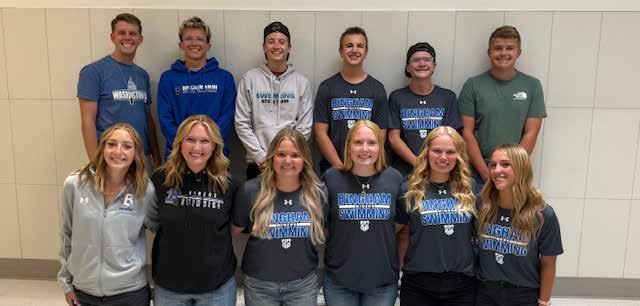
“Learn from both your successes and failures!,” added Howard said.
For Maddie Howell, a competitive swimmer for 10 years who first took to the
feel like a bit much, but don’t get lazy. There’s only so much time you have.”
As a senior, time goes by so fast. This fact certainly hasn’t escaped Coach Banasky,






By Holly Curby hello@hollycurby.com
With Halloween right around the corner, families are busy planning costumes, buying candy and decorating their homes. But amidst the excitement, safety should be a top priority. This festive night—meant for costumes and candy— can quickly take a dangerous turn if precautions aren’t taken. According to safety experts Judy Chavez from the U.S. Consumer Product Safety Commission and Amy Bryant, Crime Prevention Specialist with Sandy City Police, Halloween is one of the riskiest nights of the year for children and families.
Here’s how you can enjoy the frightful fun without real scares.
Costume Safety: Keep it Fun and Flame-Free

Rebekah Wightman, J.D. is an experienced Estate Planning and Probate attorney. She takes pride in serving her clients and providing them a pleasant present and a peaceful future. Rebekah’s fun personality and commitment to her clients, make an often dreary experience “a-heck-of-a-lot-of-fun”!
“Costumes should fit properly—not too long, loose or baggy,” Chavez said. “Long, flowing fabric can lead to trips and falls or even become a fire hazard if it brushes up against open flames like in Jack-o’-lanterns.”
When choosing costumes:
• Opt for flame-resistant materials like polyester or nylon.
• Avoid sheer cotton or rayon, which are more flammable.
• Add reflective tape or glow sticks to
assume because it’s a family night that everyone has good intentions.”
Other tips:
• Don’t open the door to strangers if you’re not expecting them.
• Teach kids not to answer the door without an adult’s permission.
• Install deadbolt locks with a 1.5-inch throw for added security.
• Use long screws in strike plates for stronger resistance to forced entry. And don’t forget the garage. “Garage doors left open are an open invitation,” Bryant said. “Close and lock them—and if you’re going out of town, unplug the garage opener entirely.”
Porch Pirates Beware: Protect Your Packages
Halloween kicks off the holiday season, which often includes more online shopping and deliveries. “Track your packages and get them off the porch as soon as they arrive,” Bryant said. “Porch pirates are waiting for a chance to snatch them.”
Consider having packages delivered:
• To your workplace
• To a trusted neighbor
• To a secure community locker Also, let trusted neighbors know if you’ll be out of town. “They can keep an eye on things, collect packages, and even roll out your trash bins to make it look like you’re home,” she added.
Trick-or-Treating: Safety on the Streets


• Equip costumes with flashlights, glow sticks or reflective gear.
• Choose well-lit neighborhoods and avoid poorly lit areas.
“Motorists, too, need to do their part,” Bryant said. “Drive slowly, keep headlights on, and be extra cautious in residential areas.”
Don’t Let Decorations Become a Disaster
That adorable Jack-o’-lantern on your porch? It might be a fire risk.


Trick-or-treating is a highlight of Halloween—but it also poses risks, especially
Bryant emphasized: “An adult should always accompany children. Even if they think they’re old enough, parents need to be nearby.” According to Chavez, the CPSC estimates 3,600 Halloween-related injuries occurred in recent years, many due to falls, allergic reactions and decora-
Use sidewalks and crosswalks—nev-
Make eye contact with drivers before



“If you use candles, never leave them unattended,” Chavez said. “Better yet, opt for battery-operated LED candles.”
Also:
• Bring in pumpkins and outdoor décor at the end of the night.
• Avoid leaving anything out that can be vandalized or used dangerously.
• Monitor any electrical decorations for exposed wires or overloading outlets. Have Fun, Stay Safe
Halloween is meant to be fun—not hazardous. With the right precautions, families can enjoy the thrills of the season without becoming part of the injury statistics. As Chavez puts it, “It’s about making smart choices. We want Halloween to be memorable for the right reasons.” l


In South Jordan, six candidates are campaigning for a seat on the city council. You’ll learn more about each of them as you continue to flip through this Voter Guide.
• Noah Barrett & Dawn Ramsey are running for Mayor.
• Don Shelton & Rachel Lewis Jepperson are running for the District 3 council seat.
• Jason McGuire & Stacy Hughes are running for the District 5 council seat.
Throughout the greater Salt Lake County area, voters are encouraged to pay attention to important calendar dates (like mail-in deadlines) and locate the most convenient ballot drop box.
Residents have a few different options to submit their ballots, after receiving their ballot and prepaid envelope in the mail close to two weeks before the election date.
For voters planning to vote-by-mail, ballots must be received by 8 p.m.. on election day (postmarks don’t count). In other words -- mail early.
In previous election cycles when residents were able to postmark their ballots on the day of the general election. Per the recently passed H.B. 300, voters do need to make sure their ballots are physically ‘in-hand’ at the Salt Lake County office on election day.
While registered voters do have the option to send in their vote-by-mail ballot before Nov. 4, they also have the option to vote in person. Check the accompanying list of Vote Box locations to find the ballot box nearest you. Similar to mail-in voting, ballots must be dropped off before 8 p.m. on election day.

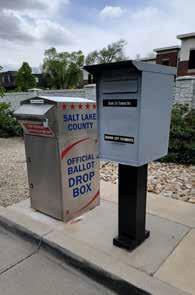
Hey Voters! Please review the following voting information directly from Salt Lake County before submitting your ballot.
Nov. 4 is the General Election - Vote Centers and drop boxes will close promptly at 8:00 p.m.
Important Dates
Oct. 10 - Salt Lake County will host Logic & Accuracy Tests where the public is invited to attend live demonstrations of voting equipment.
Oct. 14 - Ballots being to be mailed (21 days before the election as per Utah’s legislation).
Nov. 18 - Board of Canvassers Meeting where each city will certify results after presented to the City Recorders.
Vote Box locations:
Residents can vote by mail or in-person at various drop box locations throughout Salt Lake County:
County - Salt Lake County Government Center (2001 State St.)
Cottonwood Heights - City Hall (2277 Bengal Blvd.)
Draper - City Hall (1020 Pioneer Rd.)
Holladay - City Hall (4280 S. 2300 E.)
Herriman - City Hall (5355 Main St.)
Midvale - City Hall (7505 Holden St.)
Millcreek - Common (1354 E. Chambers Ave.)
Murray - Post Office (5025 State St.)
Sandy - City Hall (1000 Centennial Pkwy.)
Sandy - Senior Center (9310 S 1300 E)
South Jordan - City Hall (1600 W Towne Center Dr.)
South Salt Lake - Granite Library (331 S. 500 E.)
Riverton - City Hall (12830 S Redwood Rd.)
Taylorsville - City Hall (2600 W Taylorsville Blvd.)
Wet Jordan - City Hall (8000 S Redwood Rd.)
West Jordan - Ron Wood Park (6000 W New Bingham Hwy.)
West Valley - City Hall (3600 S Constitution Blvd.)
Register to Vote:

Voter Registration website
Residents can register to vote online up to 11 calendar days before the election (before 5pm). Registration must be submitted and received before Tuesday, Oct. 28 to receive a ballot in the mail. A valid form of ID, accurate address information, and date of birth is required to register. Residents can register either: online by visiting the State of Utah’s website (see adjacent QR code); through mail by filling out the Formulario de Inscripcion por Correspondencia Para Votantes (Voter Mail-In Registration Form) found on the County’s website; or in-person at the 2001 S. State St. office. Same-Day registration options will also be available at vote centers. Learn more about voting information through Salt Lake County’s website at: saltlakecounty.gov/clerk/elections. Or by directly emailing: vote@saltlakecounty.gov.

voteshelton.com
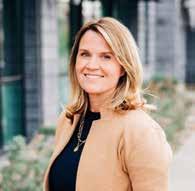
Do you believe current property tax revenue is being used effectively? How so?
Thinking about fiscal responsibility - What values should your local budget reflect? How do you plan to balance those values?
South Jordan’s property tax goes to the city’s general fund. The property tax does not entirely cover the cost of public safety, so effectively the property tax is used to pay for our police, fire and emergency responders. I believe this is an effective and appropriate use for these sacred funds.
What systems would you support to hold local officials accountable when transparency standards aren’t met?
Our budget should reflect the values of city residents. South Jordan City was the first city in the State of Utah to implement Priority-Based Budgeting. The priorities are: 1-Safe Community, 2-Reliable Public Infrastructure, 3-Balanced Regulatory Environment, 4-Desirable Amenities & Open Space, 5-Economic Development, 6-Sustainable Growth, 7-Engaged Community, 8-Responsible Governance. The city surveys the community every year to make certain these priorities have not changed. All budget decisions are tied directly to these priorities. You can learn more about our Strategic Priorities at www.sjcutah.gov.
The State of Utah has rules that municipalities must follow that are generally referred to as Open and Public Meetings Laws. Each elected official is required to go through training every year regarding these laws. No votes may be taken except in public meetings. There are some exceptions to these laws, for example: discussion of the sale, lease, or purchase of real property, pending litigation, and discussion of the character and/or competence of an individual. These types of issues may be discussed in a closed meeting, but no votes may be taken. The State of Utah imposes significant penalties for violations of these laws. The South Jordan City Attorney is diligent about making sure the city council follows these laws. Also, the State Auditor watches closely for violations.
South Jordan has been a good steward of property tax revenue, but those dollars are being stretched further as sales tax revenue has declined over the past couple of years. That means we are leaning more heavily on property taxes to cover essential services like public safety, roads and parks. We need to continue using property tax revenue wisely, but the bigger focus should be on growing sales tax revenue through smart economic development. Supporting our great South Jordan businesses, encouraging people to shop local and attracting new businesses will help strengthen our tax base so property taxes can be used more effectively. Just as important, the city must be transparent about where we stand financially so residents can see both the challenges and the solutions.
When I think about fiscal responsibility, I think about how most families budget at home: cover the essentials, plan ahead and avoid spending money you don’t have. The city should take the same approach. We need to be careful with taxpayer dollars, keep our focus on core services like public safety and roads and also make smart investments that help South Jordan grow without adding extra burden on residents. With my business experience, I know how to set clear priorities, stick to a budget and make sure results are transparent and measurable. That’s the approach I’ll bring to city hall.
Residents should always be able to see how tax dollars are being spent and how decisions are made. Budgets, council votes and spending reports should be easy to find and easy to understand. If those standards aren’t met, there should be real follow-up like public reporting or independent audits. I also believe in proactive communication so residents don’t have to go digging for information. At the end of the day, transparency is about trust, and the more open we are, the stronger the connection will be between the city and the people it serves.
What is your stance on local government cooperation with ICE?
I can’t speak for other municipalities, but I can tell you South Jordan has more public safety issues than our police force can handle as it is. We simply do not have the capacity to add immigration enforcement to the load our officers are currently carrying. That said, if our officers, in the course of their normal duties, arrest an individual who does not have legal status in the United States, I believe they should notify ICE.
Our police officers have limited resources, and those should stay focused on keeping South Jordan safe by preventing crime, protecting families and building trust in our neighborhoods. Federal immigration enforcement is a separate responsibility, and when cities take that on, it pulls attention and resources away from local priorities. I support cooperation with federal agencies when required by law, but I do not believe South Jordan should enter programs that go beyond that. Strong community policing, clear boundaries between local and federal roles and a focus on crime prevention are the best ways to keep our city safe.
Sourced directly from our readers
Do you believe current property tax revenue is being used effectively? How so?

votejasonmcguire.com
When discussing property taxes, we need to acknowledge that only a small portion of the total amount you pay actually goes to the City of South Jordan. The majority of your property tax dollars are directed to the Jordan School District and the State Basic School Levy. Roughly $0.14 of every dollar paid in property taxes is allocated to the city, and those funds are being used wisely and efficiently to support public safety.
The City of South Jordan uses its portion of property taxes to fully fund our police department and cover approximately half of the operating costs of our fire department. When compared to other cities in Salt Lake County (accounting for property taxes, public safety fees, park fees, etc.), South Jordan continues to maintain a lower property tax rate than most—including Herriman, Riverton and West Jordan.
Still, I recognize that property taxes can be a burden for many families. That’s why I remain committed to promoting strong, responsible economic development to broaden our tax base and reduce the city’s reliance on residential property taxes. My goal is to keep South Jordan financially sound while minimizing the tax burden on our residents.
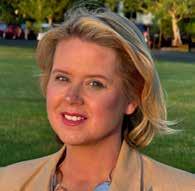
stacyforsojo.com
Property tax revenue is a vital component of a thriving community. While I appreciate that much of South Jordan’s tax revenue supports essential services, I am committed to ensuring that every dollar is used efficiently, effectively and transparently. I will focus on initiatives such as practical policing through community engagement, cleaner communities through water-wise plantings and energy-efficient practices and a strategic plan for responsible, thoughtful growth. These priorities reflect my belief that a city council must act as careful stewards of both the land and the tax revenues entrusted to us by our residents.
I will advocate for funding decisions that deliver long-term benefits to families, neighborhoods and local businesses while keeping in mind that many residents are facing financial pressure. This means balancing short-term needs with investments in infrastructure, safety and sustainability that will strengthen South Jordan for years to come. My goal is for residents to feel confident that every dollar is spent wisely and strategically. By focusing on resilience, sustainability and smart growth, we can make South Jordan not only a stronger city today but also one that is prepared to meet the challenges of tomorrow.
Thinking about fiscal responsibility—what values should your local budget reflect? How do you plan to balance those values?
What systems would you support to hold local officials accountable when transparency standards aren’t met?
The City of South Jordan’s budget must reflect the values and priorities of our residents—and I’m proud to say it does. Our budgeting process is guided by key strategic priorities developed by the city council and mayor, city staff, and input from residents through the city’s annual community survey. These priorities include safe communities, reliable public infrastructure, a balanced regulatory environment, desirable amenities and open space, strong economic development, sustainable growth, an engaged community and fiscally responsible government.
To ensure we are truly aligning our spending with community values, the city uses a priority-based budgeting model. This means city employees track how their time is spent, allowing us to assess the full cost of programs, services and events. More importantly, it helps us determine whether we are investing city resources—both time and taxpayer dollars—into areas that matter most to our residents.
Our goal is to be transparent, efficient and responsible stewards of public funds. I am committed to maintaining a budget that not only supports essential services, but also strengthens our quality of life, encourages thoughtful growth and reflects the values of those who call South Jordan home.
Utah already has strong oversight and transparency laws in place, including the Government Records Access and Management Act, the Utah Open and Public Meetings Act and the Transparent Utah website. These tools are designed to ensure accountability and public access to government information.
If cities or elected officials are not complying with these established laws, they should be held accountable—and reported through the proper channels. Transparency is not optional; it’s a fundamental responsibility of public service.
I believe our local budget should reflect the values our community prioritizes: transparency, sustainability and compassionate support for those who need it most. South Jordan’s budget must fund public safety, essential services, long-term infrastructure and programs that strengthen neighborhoods and improve quality of life. Balancing these priorities requires thoughtful decision-making and accountability for every dollar spent.
I am committed to planning for the city’s future growth while ensuring that today’s residents continue to enjoy the amenities, safety and livability that make South Jordan such a special city. This means making data-driven, evidence-based choices, evaluating the long-term impacts of funding decisions, and prioritizing investments that deliver measurable results.
I want every taxpayer to feel confident that their hard-earned tax contributions are being spent wisely. By focusing on efficiency, sustainability and balanced investment across South Jordan, I aim to build a budget that not only meets our immediate needs but positions South Jordan for continued success well into the future.
I believe accountability and transparency are essential for building trust between residents and local government. To ensure South Jordan officials are responsible to the community, I support clear oversight, publicly accessible spending reports, regular audits and easily accessible city council meeting agendas and minutes. Residents should easily see how decisions are made, how funds are spent and which projects are prioritized.
I also support open access to city leadership, accessible meeting protocols following best practices for people with disabilities and positive channels for resident feedback. Conflicts of interest should be clearly disclosed, and when standards aren’t met, corrective actions must be swift, transparent and publicly documented.
Accountability isn’t just about reacting to problems—it’s about creating a collaborative process guided by plans and results, not political posturing or “back-room” partisan deals. Residents should feel confident that their voices are heard, their tax dollars are protected and city officials act with integrity and responsibility..... For more candidate responses check out our website at valleyjournals.com




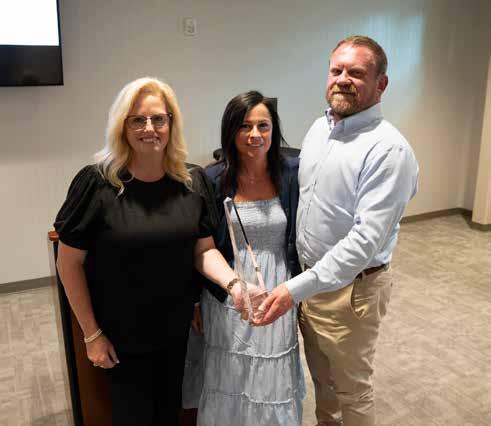
South Jordan City has presented its 2025 South Jordan Corporate Citizen Award to Tom Buckley and Salt Lake City Motorcars. The dealership is located at 1231 South Jordan Parkway.
The award goes annually to a business that has been an active partner within the community.

“They have been warmly embraced by the community,” Mayor Dawn Ramsey said in a release. “They’ve always been so generous, and they don’t have to do all the things they’ve done, but they do it because of who they are.”
Buckley is a lifelong automotive retailer. He began his career in the automotive business in 1991 in Memphis, Tennessee, and has remained in the industry since. A Tennessee native, he successfully worked his way through the business in sales, finance, general sales manager, general manager and finally dealer principal. Because of an enduring relationship with Bentley, he was awarded the Bentley and Lamborghini franchises for Salt Lake City and, in July 2021, Salt Lake City Motorcars was born.
Buckley, who works alongside his wife of 30 years, Amy, has since added Lotus and Aston Martin to the lineup. With an extensive understanding of the market, the pair developed sound policies and programs to foster a positive, rewarding work environment for their employees.
The Buckleys are also deeply committed to strengthening Utah communities, the city release said. They actively support local initiatives, schools, charitable causes and programs that enrich the lives of families across the state. They champion veterans and service members, recognizing their sacrifices and honoring their role in safeguarding freedom.
“The largest private contribution to our Gold Star Families Memorial Monument came from Salt Lake City Motorcars, and it’s beautiful,” Ramsey said.
The South Jordan Corporate Citizens Award has been presented to a select group of companies since 2010. Past recipients include 2010 recipient Fred Lampropolous, Merit Medical; 2011 recipient Dr. Dan Fischer, Ultradent; 2012 recipient Don Whyte, Rio Tinto; 2013 recipient Sam’s Club, South Jordan; 2014 recipient The Boyer Co.; 2015 recipient Jerry Seiner and the Jerry Seiner Auto Group; 2016 recipient Harmons Neighborhood Grocer; 2017 recipient Bryan Synan and Gordmans; 2018 recipient Becky Pickle and Chick-fil-A; 2019 recipient RiverPark Development Group; 2020 recipient University of Utah South Jordan Health Center; 2021 recipient Roseman University; 2022 recipient Ivory Homes; 2023 recipient Doug Young; and 2024 recipient Gardner Group and Arbor Commercial. l
Bingham alum Kendzee Cloward came home to coach the Miners and the results are beginning to show.
By Brian Shaw b.shaw@mycityjournals.com
Twodays after a tough loss at Skyridge, the same team that eliminated the Miners at last year’s 6A state championships, Bingham rebounded.
That was probably tough to do considering Reed Carlson departed the program after two years, but the Miners got that weight off their backs in their home opener Aug. 14 against Olympus.
Inside the Pit with new head coach and alum Kendzee Cloward at the controls, you could forgive Bingham for having a few early jitters on the court on which she played.
But, there were no signs of such thing after a first set, 25-22 setback to the Titans.
Bingham chipped away, winning the second set 25-22 and punching a hole on Olympus’ side of the court in the third, 2517.
The Miners showed a few signs of fatigue in the fourth, losing 25-23. In the tiebreaker, Bingham won 15-8 to stamp its first win on its home court for 2025-26.
The work for Bingham began long before the girls team took the court. They volunteered for Feed My Starving Children, packing more than 200 boxes of food and 44,000 meals for 123 kids, according to FMSC.
After that, the Miners held an Alumni Game in which the current team played against some of Bingham’s volleyball alumni.
“It was a very special night having some of our alumni come back to The Pit to play our Lady Miners,” Cloward said. “Thank you to all alumni, families, students, donors and the community for supporting us in our fundraiser! Good job Miners.”
With Weber State commit Lexie Carlson back, along with several other seniors, the Miners took that win against Olympus and a week later won their second straight, a 3-1 win at Weber.
Their third straight came on the road as well, in the Miners’ Region 2 opener at Copper Hills: 18-25, 25-19, 25-13 and 2523.
Bingham (1-0 Region 2, 6-4) fell to Orem and Brighton to serve off September at the UVU Invitational, and yet the Miners got back in the win column with a 3-1 win vs Crimson Cliffs.
Would the Miners hop on a new win streak at UVU?
The answer was an emphatic yes. Bingham blasted Wasatch in straight sets, 25-23, 25-20 and 25-17, getting better with every serve they aced.
The Miners would chip away to win their third in a row—the second time this year that Bingham reeled off a three-game win streak—with a shutout of West Field.
To have two three-game win streaks to start a year puts this Miners team right on track with last year’s squad; both Bingham girls volleyball teams reached that mark on the exact same day, Sept. 5.
Bingham under Cloward is also the No. 7 team in 6A, according to the latest RPI from the UHSAA, Utah’s high school sports governing body. There seems to be a surge of momentum now that a Miner alum is the head coach.
Whether it’s a silent auction at which Lexie’s older bro donates his old OKC Thunder NBA jersey—and embarrasses his little sister in the process when she’s doing a video on the team’s IG—or area businesses are stepping up to offer some of their goods and services, the South Jordan community is stepping up.
The Miners were at Cedar Valley for a Region 2 showdown Sept. 11, and they dropped the first set before rebounding to win the next three and the game by the score of 24-26, 25-15, 25-18 and 25-21. l
Miners showed they can compete with anyone at Utah Prep Invitational, various players are stepping up as season unfolds
By Brian Shaw b.shaw@mycityjournals.com
Under a canopy provided by the Cyprus mountain, block “C” and Kennecott Copper Smelter towering overhead and with birdsong piercing the morning air as gulls headed northwest toward the Great Salt Lake, Magna’s Copper Golf Club played host to 14 high school teams including Bingham’s for the Utah Prep Invitational Aug. 8.
Bingham finished 10th out of 14 teams at about the time that the summer heat pushed away the tolerable air like a blast furnace. But, an eighth place 71 shot by Miner golfer Krew Heward gave Bingham and its team some hope and a refreshing outlook headed into the season opener.
The most improvement any team has tends to come between its first and second week of the season.
For the Miners, that occurred right before the first tournament in Region 2 got underway. Once it had, Bingham golfer Parker Young nearly won Aug. 13 at River Oaks, finishing three strokes at a 69, right behind Jaxon Erickson of Riverton. Miner Connor Oettli was sixth. As a team, the Miners hit 296, good for fourth place.
During the third week of action and the second in region play, Bingham was playing the course at Lakeside in northwest Utah County. The Miners had just one finisher in the top 15 individually. Bingham’s Will Johnson found himself in a tie for fourth along the shores of Utah Lake with a score of 73. The Miners stayed steady in fourth, teamwise.
Perhaps the most progress for the Miners came between the fourth and fifth weeks. A bit further to the north, Talon’s Cove played host to Bingham and the other teams in Region 2. Miner golfer Krew Heward was back in a steady flow, nearly finishing in the top two. His 72 earned Heward a tie for third
place, his best finish since that eighth place to open the season.
Bingham’s Connor Oettli grabbed his second top 10 -finish in three weeks, coming in with a 10th place score of 75.
Individually, the Miners now have two golfers in the top 15 in Region 2: Oettli sits in ninth while Heward is in 12th.
What’s even more interesting is that Bingham as a team now has a driver’s seat in third place in the region.
As they head into the final few weeks of Region 2, the Miners look like a team that could shave off 14 strokes and perhaps win a region medal—not to mention take home some individual bling.
Add a little team-building to the equation—since there are probably a handful that don’t necessarily know each other—and this is even a squad that can contend for some hardware at state.
The Bingham Miners 2025-26 golf team is: Will Barrick, Preston Jack, Parker Young, Krew Heward, Champ Carlson, Connor Oettli, Sean Robison, Charles Stevens, David Peirce, Jack Stevens, Abram Never, Carter Cantwell, Conklin Thompson, Linken Cromar, Caleb Bennion, Carter Orme, William Johnson, Luke Wright, Landon Jack, Oscar Passey, Case Hasegawa, Garrett Young, Tadashi Miyasaki and Tate Kirkham. l











The Rio Grande Depot has been the subject of numerous haunting stories, most famously the legend of the “Purple Lady.” The Stone Tape theory attempts to explain why some locations seem to be more haunted than others.
By Collette Hayes c.hayes@mycityjournals.com
Whatif a building could remember every moment, every story and every experience that’s happened within its walls?
The Denver and Rio Grande Western Depot, constructed in 1910 in Salt Lake City, is known as one of the most beautiful and haunted buildings in Utah. Its exterior features a 5-foot-high base made of rare Colorado Yule marble complemented by brick and terra cotta above the marble base as well as a red tile roof. The interior of the depot is adorned with elegant marble finishes sourced from Kansas City. The combination of brick and stone construction provides the perfect medium for residual hauntings, which are often explained by the Stone Tape Theory. This theory suggests certain materials can “record” events that occur around them, serving as a common explanation for ghost sightings and apparitions.
The pseudoscientific Stone Tape Theory suggests that traumatic events can leave an imprint in stone, rock and brick. These materials are believed to be particularly effective at recording past events, which then can be “played back” like a recording. Limestone is considered the most effective of these materials. Marble, being a metamorphic rock derived from limestone, shares similar chemical properties, making it also highly effective in capturing past events. Sensitive individuals may be more attuned to the energy emanating from the stone in buildings, which could explain why only some people have experienced paranormal activity in the Rio Grande Depot.
The Stone Tape theory attempts to explain why certain locations seem to be more haunted than others, as well as why similar events tend to repeat in specific hauntings. It also provides insight into a common type of paranormal ex-
perience. Witnesses at the depot have reported seeing figures engaged in their daily activities, hearing disembodied sounds such as footsteps running down the hall, doors slamming, an emergency telephone ringing at 3 a.m., and lights turning on and off. Additionally, there have been sightings of a distressed woman dressed in purple in the second-floor ladies’ restroom, who has also been seen frequently near the café.
“While working in the Rio Grande offices, I never personally experienced anything out of the ordinary,” Deputy Director of the Utah Historical Society Kevin Fayles said in a recent conversation. “However, others have reported hearing the sound of running footsteps in the basement hallway. Also, I have an image of purple mist on the mirror in the ladies’ restroom, taken by a former employee. Another photo I have is looking down a hallway, where you see three faint figures. The building’s age could contribute to the feeling that it is haunted. I definitely wouldn’t want to be alone in the building at night.”
The Stone Tape Theory is compelling, but is backed by little scientific evidence. However, it does offer some explanation as to why individuals who have worked at the Rio Grande Depot have experienced similar events in the exact same locations.
An employee told Fayles that the Purple Lady was the creation of a former historical society colleague who had worked there long before Fayles took a position with the society. Apparently, the woman who invented the story believed that every train station should have a legendary ghost story. So, she fabricated a tale about a raven-haired beauty dressed in a purple pillbox hat, dress and matching heels. The story goes that the woman died under a train while trying to retrieve her engagement ring, that had been thrown on the tracks by her angry lover.
As reported in local media, the building has been the subject of numerous investigations including ghost hunters, psychic mediums and a séance performed by a Wiccan. The investigative findings fell a bit short of explaining the strange occurrences experienced by several employees at the Rio Grande Café.
Cafe staff have reported unusual incidents, such as hearing a woman singing in the
bathroom when the building was closed, experiencing flickering and turning off of lights, and receiving a 3 a.m. call from an emergency phone located in an empty elevator.
Also, Utah Department of Heritage & Arts Communication Director of Communications Josh Loftin noted that people have reported hearing footsteps on the upstairs balcony, sounds of talking or music playing, ghostly sightings upstairs and even alarms going off unexpectedly.
Paranormal historian Troy Taylor, author of more than 150 books on history, hauntings, true crime and host of the popular podcast “American Hauntings,” suggests that the vast majority of the paranormal cases he has been involved in have perfectly natural explanations. He says, “It is easy to feed off one another’s fears and literally ‘invent’ a haunted house.”
Although he admits, “I have been involved in some cases that did puzzle me and left me feeling that the location really was haunted.” He says to keep in mind, “When investigating a paranormal event, activity rarely occurs during an investigation.”
Residual hauntings can attempt to explain most of the haunting activities that have been reported at the depot. Digging a little deeper, though, what about the water taps that turn on and refuse to turn off, reported by an employee or the Rio Grande Depot Café employee who said she was repeatedly locked out of the building late at night with no explanation, or cold spots in the building with no apparent cause for the low temperature? And the most pressing question: Will the new renovation of the depot stir up even more haunting activity?
Jeff Hymas, Utah Department of Government Operations executive communications director said, “For more than five years, extensive efforts have been undertaken at the Rio Grande Depot to assess the damage caused by a March 2020 earthquake, and to make the necessary repairs. As part of this process, the Utah Division of Facilities Construction and Management is working to ensure the restoration of the building’s structural integrity and to protect against future seismic activity. The building remains closed to the public while construction activities continue.”
According to paranormal belief, renova-
tions in a haunted building can sometimes disturb spirits and lead to a significant increase in paranormal activity. While there is no scientific evidence to support this idea, many homeowners have shared ghost stories that describe this phenomenon. One common theory is that renovations can unsettle spirits that are attached to the building. The changes may feel like an invasion to an entity that considers the building its home, leading to the spirit becoming restless or agitated.
On Jan. 7, 2021, Adrienne White, owner of House Genealogy, began renovating her newly purchased historic home in Sugar House. While working in the basement, White and her sister encountered an inexplicable, almost paranormal, occurrence: an unidentifiable noise resonated through the house. Quickly returning upstairs, they found nothing out of place nor evidence of an intruder. The experience prompted her sister to search for information about White’s home, which led to the discovery of an obituary for a woman who had passed in the house on Jan. 7, 1976—exactly 45 years from the day the renovation had begun.
“I’m not a nonbeliever in paranormal activity, but I don’t believe 100% either. However, my sister sending me the obituary changed my life,” White said. “It sparked my curiosity about the people and events that came before us, prompting me to explore the history of my home and other homes throughout the city. Amazed and fulfilled by what I uncovered about my home, I launched House Genealogy in February 2022.”
According to Jerod Johnson, a principal for the structural engineering firm Reavley Engineers, the Rio Grande Depot suffered severe damage from the 5.7 magnitude earthquake in 2020. Those involved in the renovation project have stated it could require “several years” to complete.
It may be quite some time before it is known whether the Rio Grande Depot experiences a significant increase in paranormal activity as a result of the current renovation. When the doors reopen to the Rio Grande Depot, the suspense surrounding this possibility will welcome both the curious and the brave to explore its intriguing hauntings further. l
The defensive back only started playing varsity football last year and is already fielding offers from four schools
By Brian Shaw b.shaw@mycityjournals.com
Talk to Denzel Peoples’ mom Tiffany for one second, and you see why her son is the type of player he is on the football field.
Firm but kind. A consummate team player and yet considerate to a fault.
“As an athlete he has the drive and always been a great athlete. He puts in 1,000% effort in everything he does,” said his mom. “For example, he is not afraid to put in the extra hours–often running drills in the rain and on hilly slopes.”
What’s surprising to most is that Peoples, a two-sport star at Bingham, has only been playing on the varsity since last season.
It is a spot the Bingham senior has earned. As a junior, Peoples played in 10 games for the Miners. He announced himself on Aug. 16, 2024 against Lone Peak in a regionally televised game. He had four tackles, one solo, in a 21-0 loss.
In another game on regional TV, Peoples had four tackles, two solo and a tackle for loss in a 34-23 shootout setback at Lehi last Aug. 30.
Utah State commit Kadiyon Sweat might have been the feature attraction that night, but in the shadow of the Lehi Roller Mills, Peoples had his moments.
By the time his junior year was over as a football player, Peoples had four or more tackles in five of Bingham’s games and finished the 2024-25 season with 28 tackles and two interceptions.
It is that leadership that helped Peoples retain his spot at defensive back after the Miners brought in some new blood, including a highly touted player in the secondary from Summit Academy and another who was an All-Conference selection back in Alaska during Peoples’ junior year.
According to his mom, Peoples has always been the kind of leader that others gravitate towards—without being overly boisterous.
“He is a great role model to other athletes by offering support and motivation to the entire team on and off the field,” his mom said. “You always catch him with a smile on his face.”
With so many players on the football team from all walks of life, Peoples’ mom said he prides himself on working with everyone regardless of their skin tone and beliefs.
“He prides himself on being a bridge between cultures, bringing everybody together under the “One Love Philosophy,” his mom said.

His twin sister Stacia, who herself is also a two-sport star in volleyball and basketball, serves as Bingham’s football team manager.
“The number one thing we stress as a family for Denzel is education first,” his mom said.
“He has always been a good student and has maintained a 3.8 GPA throughout high school.”
Those grades, along with a desire of Peo-
ples to go to college and receive a degree in either law or computer programming, offer Peoples an opportunity to continue his studies.
But, should the Bingham senior so choose, Peoples may also have a better than average chance at continuing a football career in college; he currently has athletic scholarship offers from Southern Utah, Utah Tech, Weber State and Idaho State.
“He is happy to get the opportunity to achieve that goal with offers to play at several colleges with all expenses paid,” his mom said, who said her son expects to make his decision sometime in October.
As Peoples’ senior year continues, his numbers are improving, too. He racked up a career-high seven tackles, five solo, in Bingham’s 23-13 loss to Alta.
And yet the high school football story of Peoples may begin and end on television. At nationally ranked Corona California Centennial Saturday Sept. 6, he had the game’s lone interception and deflected a pass during the Miners’ 42-6 setback on the field where Jake Retzlaff played his high school football.
In the eyes of his family, witnessing what might happen from here on out is just a result of all the hard work he’s put in, according to his mom.
“His future is very bright and we are excited to see what a strong man he will become.” l

Spooky season is approaching and for elementary schools that means combining costumes, classwork and community with safety.
By Julie Slama j.slama@mycityjournals.com
As about 600 Glacier Hills elementary students parade through a White City neighborhood in costume on Halloween morning, safety remains top of mind for Principal Julie Winfree.
“We will have police officers lead, follow and patrol intersections and we’ll have teachers, aides and extra staff with walkie-talkies walking with the students,” she said, urging parents to ensure kids wear appropriate shoes and coats. “It’s a fun opportunity for the parents and community to sit out on their driveways and see the students parade by; they line the streets.”
Still, she notes, “It’s also a day of learning so we want students to wear costumes they can learn in.”
That means no masks, weapons or facsimiles of weapons—guidelines shared across most Salt Lake Valley schools.
Luke Allen, Granite School District’s associate director of communications, said costumes must follow regular dress code rules.
Those guidelines include students must be fully dressed, with clothing that covers the body appropriately and includes safe footwear. Students also may not cover their face unless it is for religious, health or medical reasons. Costumes or clothing may not display images, symbols or language that depict obscenity, lewdness, hate, violence, drugs, alcohol, tobacco or gang-related activity, and they may not include items that could be used as a weapon. Student attire and expression also must not cause significant disruption to learning.
“Halloween can be a fun opportunity for students to celebrate together, but we remind families that costumes at school
must follow the same rules as everyday attire,” he said. “Our focus is always on ensuring a safe, respectful and positive environment for all students.”
Many of Granite District’s 26,000 elementary students participate in Halloween parades, typically held outdoors, weather permitting.
Canyons School District Risk Manager Ryan Jakeman advises parents to consider different costumes for school and trickor-treating.
“Masks, which block visibility, and facsimiles of weapons are a ‘no-go’ at school,” he said, recommending face paint instead. “While costumes are encouraged, safety is also a priority for students.”
Canyons spokesperson Kirsten Stewart adds: “We’ve found outdoor parades, provided you can identify a safe route, are a great way to involve the community.”
Jordan School District also has shifted most parades outdoors post-COVID.
Jordan District’s Director of Communications Sandy Riesgraf said schools typically remind families: “no masks, weapons or excessive face paint. The school staff needs to be able to identify students.”
Riesgraf added costumes should be wearable all day and follow district dress codes.
At Falcon Ridge Elementary in West Jordan, Principal Aaron Ichimura said dressing up helps build connections between students and administration.
“They get to learn we’re human and enjoy doing the same things they enjoy,” he said. “Halloween traditions are deeply rooted in Utah.”
The school holds a PTA-run festival with students rotating every 30 minutes with seasonal grade-level activities.
“We’ll send out a Parent Square message reminding students not to wear masks, because we want to be able to identify students, no weapons or facsimile of weapons, no blood or vio-
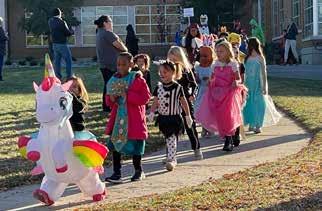
lent costumes,” Ichimura said. “We want Halloween to be a fun time for everyone.”
Like other principals, Ichimura emphasized classroom learning.
“We encourage staff to plan learning activities, and they can be ideas linked to Halloween like stories or math so it can be a creative, fun approach to learning,” he said.
In Murray School District, individual schools set safety guidelines.
“Halloween is a fun and exciting time for our students, and we support school administrators in creating a positive and safe environment by developing traditions and practices unique to their school,” said Doug Perry, Murray District’s communication officer. “We also encourage families and the community to prioritize safety when choosing how to celebrate, both at school and beyond.” l














The free event provides tools for safety, resources and resilience.
By Peri Kinder peri.k@thecityjournals.com
No one wants to face an emergency, but being prepared can mean the difference between safety and chaos. At the first Fall Preparedness Conference on Saturday, Oct. 25, Utah residents can learn how to prepare for earthquakes, wildfires, floods, power outages and medical emergencies at the South Salt Lake Community Center (2531 S. 400 East).
The free event is open to all community members, bringing together resources, agencies, experts and demonstrations to help families, groups or individuals build skills, acquire confidence and learn how to prepare for the unexpected. Emergency preparedness experts have stated that a communication plan, basic skills and an adequate supply of food and water can save lives during dangerous situations.
Held in conjunction with SSL, Salt Lake City, Millcreek, Holladay, Murray and Cottonwood Heights, the Fall Preparedness Conference is about building resilience and knowledge.
“We want to make sure people are hearing about this and feel welcome to join us,” said SSL Emergency Management Coordinator Yasmin Abbyad. “If people have
any questions, whether it’s about how they can be better prepared, how they can prepare their homes and what they should do in terms of insurance, we will be able to answer those questions.”
The morning event will feature breakout sessions that include Hands-on Stop the Bleed training; a CERT skills station to practice triage, cribbing, carrying and fire extinguisher use; a moulage demonstration to learn how to apply realistic, mock injuries; and the HAM It Up radio essentials course for understanding ham radio operations.
“We have a lot of people in our community who have gotten a ham radio license, but they don’t necessarily know how to use their radio, or don’t know how to get connected to the community,” Abbyad said. “We have five or six different groups that will be present at the conference, where people can ask questions to experts in the field.”
The afternoon is dedicated to a full disaster simulation where community members can practice skills they learned in the CERT course. People who haven’t earned a CERT certification can shadow the members or watch from the sidelines to learn necessary disaster actions.
For decades, Utah officials have encouraged residents to prepare for disaster. Abbyad mentioned the recent fire in Millcreek, caused by a lawn mower, that left 80 people without a home. She also pointed out the predicted


earthquake in Utah, which could cause major damage and injuries.
“If the big earthquake hits us, it could take up to four days for outside resources to get to us. Highways might be down, electrical lines and trees are likely going to be in the streets and all of that has to be cleared before they can make their way to hospitals or extremely damaged areas,” Abbyad said.

“We want to make sure people are prepared with water and the ability to survive for four or five days without the amenities we’re used to having.”
Although the event is free, pre-registration is appreciated so organizers have an estimated number of attendees. Visit SSLC.gov or email yabbyad@sslc.gov for registration information. l

Funeral arrangements are a deeply personal choice. Preplanning provides you with the time needed to make practical, detailed decisions that reflect your standards, lifestyle, taste and budget. And we assure you and your family that the choices you make will be carried out as planned.
The exhibit honored the beauty of experience and lifelong expression.
By Peri Kinder peri.k@thecityjournals.com
Abroken swing hangs from a tree branch, next to an empty house depicted in colors of brown and gray. The picture is titled “Where Have All the Children Gone?” and was painted in watercolor by Millcreek resident Ralph Morelli to depict the loneliness he felt when he didn’t visit with his children and grandchildren.
Morelli’s painting was one of more than 200 entries in the third annual Senior Art Show, sponsored by Salt Lake County Aging Services. Held at the Salt Lake County Government Center (2001 S. State St.), the display featured art in every medium, created by seniors aged 60 and up from around the county.
“Art allows us to express feelings that we might otherwise not be able to give verbally and that’s why I believe it’s so important,” Morelli said. “My art is called emotionalism, because I’m not going for realism. I can express myself with just a few brush strokes. That’s why I think art is important. It allows us to tap into that inner self.”
The show included displays of pottery, watercolor paintings, sculpture, needlework, quilts, oils and acrylic paintings, photogra-
Grief is an individual journey with a path as unique as each one of us. To o er support and hope, we provide various Grief Support Services for those who are mourning a recent or past loss.
phy and carvings. Many of the works were done at county senior center locations.
Afton January works with the county’s aging services program. She said the pop-up gallery is a fun way to bring exposure to artwork created by the state’s seniors and give them a chance to show off their talents. Last year’s event had fewer than 90 entries, but the 2025 show had more than double that number.
“It’s frankly a smashing success this year. The skill level is off the charts,” January said. “It’s one of those events that’s been gaining momentum, because it’s a fun opportunity for folks, especially our senior center participants, who represent most of the artists here, to take what they do at those centers and bring it into the community in a way that really feels intergenerational and community spirited. And it’s a fun opportunity for our older adults.”
Millcreek resident Eve Cole entered several artworks at the show, including a drop-pour painted vase and picture, and a framed arrangement of dried flowers. Cole said her sister-in-law got her interested in art during COVID, so they FaceTimed together while creating fun art pieces.
Her painting, “Black Bird in Flight,” was made with a drop-pour background, accented with black and white.
“I showed it to my husband and he said, ‘It’s birds flying.’ I never even would have







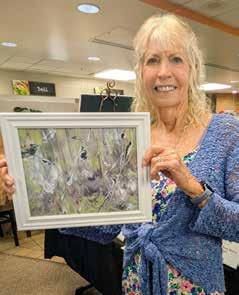
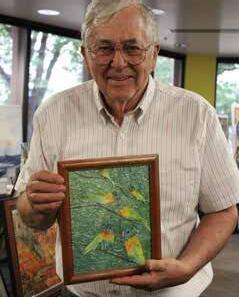
thought of that,” Cole said. “It’s just so rewarding. It just makes me happy.”
More than 300 visitors at the art show voted on their top three favorite entries. The Director’s Choice winner was Dewey Hansen (River’s Bend Senior Center) and the top three vote recipients were Deborah Chiquito (Riverton Senior Center), Shu Yamamoto (Taylorsville Senior Center) and Margi G Owens (Kearns Senior Center).
“Our older adults, many of whom are retired, get to showcase their work and feel like they’re a part of something big and public,” January said. “It gives them some recognition.” l




Volunteers craft menstrual care kits to help girls stay in school and live with dignity.
By Peri Kinder peri.k@thecityjournals.com
Formore than 500 million women and girls around the world, access to menstrual products is nonexistent. The term “period poverty” describes the struggle faced by people who don’t have adequate menstrual supplies and education.
Days for Girls is a global nonprofit offering dignity and health to women and girls by providing sustainable menstrual kits. Volunteers around the world sew, assemble and distribute the kits, allowing girls to stay in school, attend work and alleviate health concerns that arise when menstrual products are unavailable.
Suzanne Walker runs the Midvale chapter of Days for Girls, along with her friend Jennifer Woods and lots of volunteers. The chapter has created and distributed nearly 2,000 kits to Thailand, Mexico, Vietnam, Fiji, Morocco, Zimbabwe, Peru, Cambodia and Nepal.
“We not only sew components, we are also a source of outreach for our community,” Walker said. “We advocate on behalf of Days for Girls International, teaching about its mission and the reasons why there is a need for such an organization to exist. We also conduct
work events with local churches and business groups, in which they help create the kits that will then be distributed throughout the world.”
Days for Girls was started in 2008 by Celeste Mergens. She was working at a Kenyan orphanage and found that menstruating girls would sit on pieces of cardboard, often going without food. With cultural taboos around menstruation, some women and girls can’t attend school or work, or even go into a kitchen while on their period.
Mergens created washable, long-lasting pads and underwear, designed to last several years, giving the girls the freedom to leave their rooms, reclaim their dignity and potentially end the cycle of poverty.
“The evolution of this pattern for these kits has changed many times,” Woods said. “They keep making it better and better. They listen to the girls and the moms, and the feedback that people give, and they fix any issues.”
The kits contain two pairs of underwear, two reusable shields, eight absorbent liners, a washcloth and soap for cleaning, and a waterproof bag to hold everything. Colorful fabrics help normalize menstruation and the components dry quickly to allow the women and girls to manage their hygiene. The waterproof bags are also used as a washing device in places where water is scarce.
“Some girls and women walk miles and miles for water,” Woods said. “They have this very small amount of water to use for their
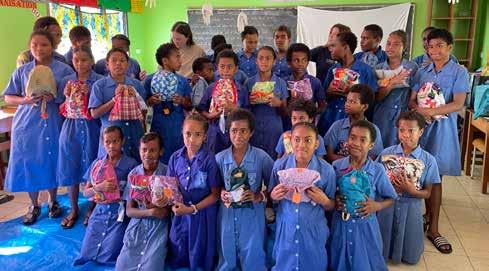
cooking and their cleaning, so these bags become little washing machines.”
Walker said it’s a lot of work to create the kits and they have specific instructions to follow to ensure the pieces work together. But she calls it a “labor of love” for the thousands of women and girls their kits have helped over the years. The group holds service projects several times a year, where volunteers sew kit components.
“Even in the United States, there are women who don’t have access to period prod-
ucts,” Walker said. “There are hundreds of stories of lives being changed through Days for Girls. I love going into my community and talking about it, because we don’t talk about it. I talk to a lot of young women’s groups and they are super embarrassed, but they have no idea how lucky they are.”
To learn about volunteering or donating to the Days for Girls Midvale chapter, visit the Facebook page @dfgmidvale. For information about the international organization, visit DaysForGirls.org. l

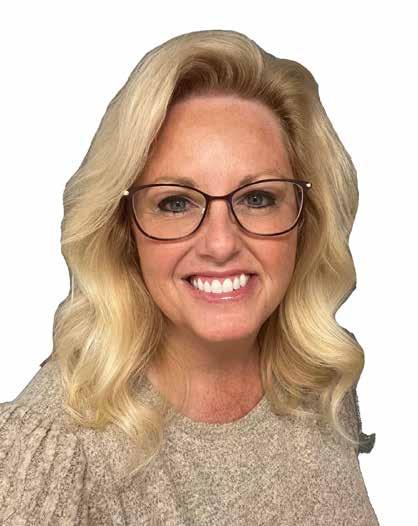
‘It’s about giving back,’ car show serves as fundraiser
Shriners Children’s Hospital was chosen as the nonprofit who would receive the contributions made from this event.
By Laura Crapo l.crapo@mycityjournals.com
lpha Warranty Services at 11456 S.
Temple Drive hosted their first annual Charity Car Show on Sept. 6. It was a family-friendly event featuring classic cars, vendors and delicious food. The DJ’s tunes encouraged curiosity and a healthy flow of foot traffic. The event was a fundraiser with proceeds supporting Shriners Children’s Salt Lake City hospital and their new nonprofit Alpha Outdoor Therapy.
“This car show isn’t just about cars,” Jeremy Lindsey said, president of Alpha Warranty Services. “It’s about giving back. We’re proud to support children receiving care at Shriners and military families healing through Alpha Outdoor Therapy.”
Shriners Children’s Hospital was chosen as the nonprofit who would receive the contributions made from this event. This was an easy decision because several AWS employees have children who are receiving care at Shriners. They depend on these donations to cover their patient’s care.
“A large percentage of contributions
to Shriners come from third-party events like these fundraisers,” Shriner of Philanthropy Director Jennifer Hale said, who is a third-generation Shriner participant herself.
“The Shriner’s Salt Lake office has a big catchment area which means our coverage goes into Idaho, Wyoming and neighboring states. We’re so grateful to Alpha Warranty because the community coming together and showing commitment really helps.”
Alpha Warranty Services is a veteran-owned company that began in 2002. They sell vehicle service contracts for new and used vehicles at the time of purchase. AWS founders, father and son Steve and Craig Rosenvall, saw a company not taking care of its customers and decided to step in, making sure claims were handled fairly. When their cars break down, costly repairs are averted.
Those two decided years ago, before the passing of Craig Rosenvall, that if they were blessed enough in the future they would buy a large piece of land near Fort Bragg in North Carolina. They were blessed and the land is called Alpha Outdoor Therapy. This is in connection with AWS using the ‘Alpha’ link. It is a nonprofit organization founded by veterans Steve Rosenvall (Alpha Warranty Services CEO) and fellow veteran Van Ferguson. It provides outdoor and therapeutic experiences for military families.
“The AOT land is for special forces and their families that live nearby. So they can

call and come over to relax and enjoy being outdoors. The brotherhood between fellow soldiers is something unique and something we’re trying to strengthen and nurture. We made this purchase and use the land and its facilities afor activities like fishing and hiking, campfires and more,” Rosenvall said. “AOT is for the benefit of the veterans and their families living in the area. I’ve had
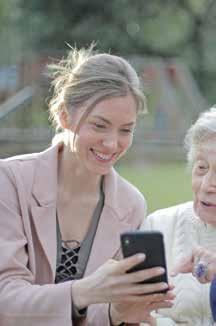




some wives say they wish AOT had been in place a few years before their husbands had committed suicide.”
There’s a feeling of community between AWS, AOT and Shriners due to their similar purpose. They’re like a family who looks out for others and will do what is necessary to help. l

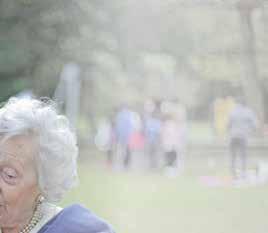





Beisbol en Salt Lake returns for a two-day event Oct. 11-12 at The Ballpark at America First Square in South Jordan.
By Tom Haraldsen t.haraldsen@mycityjournals.com
The second annual Beisbol en Salt Lake event returns to Utah for two nights, Oct. 11-12, at The Ballpark at America First Square in South Jordan. Miller Sports + Entertainment is hosting the event at the new Salt Lake Bees stadium.
In conjunction with Hispanic Heritage Month, two of Mexico’s top professional baseball teams will face each other twice. Los Venados de Mazatlán and Los Charros de Jalisco, members of the La Ligo ARCO Mexicana del Pacifico, will play on Saturday, Oct. 11 at 5:30 p.m., then again on Sunday, Oct. 12 at 1:05 p.m.
“We are excited to welcome back Liga ARCO Mexicana del Pacifico to Utah,” Michelle Smith said, president of Miller Sports + Entertainment. “It will be an exciting weekend celebrating Hispanic culture in Utah and watching two extremely talented professional baseball teams.”
There’s much more to this than just
baseball. A free youth clinic will be held at the Ballpark on Oct. 11 from 10 a.m. to noon. Following the evening game there will be a drone show. On Oct. 12, a postgame mariachi concert will be held on the field. Gates will open two hours prior to the first pitch both days, and the America First Square surrounding the ballpark will have Hispanic dance and musical groups performing along with other activities.
In a release, Utah Senate Minority Leader Luz Escamilla said, “We’re proud to celebrate the second year of Beisbol en Salt Lake, bringing our community together through the joy of sports and continuing to strengthen the relationship between the state of Utah and Mexico. After the energy and enthusiasm of last year’s game, the excitement for this year is even greater. I’m especially excited to welcome fans to the new ballpark for a fun, inclusive event that truly brings everyone together.”
The Liga winter league features 10 teams that compete throughout Northwestern Mexico. The league champion then competes in the Caribbean Series each year. Mazatlan is one of the league’s founding franchises and has won two Caribbean League titles.
Eduardo Baca, Utah’s Consul of Mexico, said in a release that “the presence

of Mexican baseball teams in Salt Lake City is a powerful example of how sports strengthen bonds between our communities and countries. Baseball is part of Mexico’s soul, and seeing our talented athletes shine
on international fields fills us with pride.” Tickets start at $15 and include opportunities for a weekend pass. More info is available online at beisbolensaltlake.com. l













Local educators try a variety of strategies to reduce chronic absenteeism rates.
By Jet Burnham j.burnham@mycityjournals.com
This is part of a series on school attendance.
Last month, the Utah State Board of Education launched the attendance initiative Every Day Counts to address chronic absenteeism rates, which rose from 12.5% to 23.8% in the past seven years. Their research shows chronic absenteeism (defined as 10% of school days missed or two absences per month) has academic, social and emotional impacts on students and results in lower grades, test scores, graduation rates and confidence.
“Each school day is an opportunity for students to learn, build relationships and grow in meaningful ways,” Utah State Superintendent Molly Hart said.
USBE provided an online toolkit and resources for families and educators to address factors which impact student attendance. They also enlisted the help of Attendance Ambassadors in every school district.
West Hills Middle School teacher Evan Feinberg jumped at the chance to be Jordan School District’s Attendance Ambassador. Feinberg is full of ideas to proactively improve attendance rates; he has implemented many already at West Hills Middle. Two years ago, he formed an attendance committee and got several staff members onboard to address and improve student attendance.
Feinberg collaborated with WHMS Clinical Support Specialist Andrew “Link” Simpson and Head School Counselor Brian Behrmann to hold weekly attendance groups targeting students with poor attendance, and last year, the number of chronically absent students decreased by 7%.
In the groups, students learn about their brain development and how to connect their actions to future consequences.
“We focus more on just life skills that will benefit them later on, to try to connect attendance to more success later on, with learning to show up on time and working with different personalities—those skills that you need for any job,” Behrmann said.
They also help students see the benefits of good attendance habits on their mental health.
“The more absences they have, the farther they get behind and then I think they just start to give up because they don’t have a clue what’s going on in class, and it’s easier for them to not be in class than have the anxiety of being called on



Show Up | Stay On Track | Graduate Together Join the State-Wide Attendance Challenge!

and not knowing the answer,” Simpson said.
The students track their academic progress in correlation to their attendance and when there is improvement, their progress is celebrated.
WHMS staff members take a positive and encouraging approach to attendance problems to prevent the problem from becoming worse.
“If the family doesn’t have a connection to school, and its punitive talks back and forth between the school and the family, that decreases that home-school connection, and it continues to get worse and worse and so it’s pushed the families away from the school so the parents don’t push their kids to attend as much as they normally would,” Simpson said.
West Jordan Middle School has also had immense success improving student attendance by building positive connections with students and families. Their 0.6% chronic absenteeism rate is the lowest in Jordan School District (district average is 23%) and one of the lowest in the state. Principal Raimee Jensen credits the low rate to the team effort by teachers, administrators, counselors, office staff and SROs to make connections with students and families.
Most JSD school policies stipulate a student’s parents are contacted by letter or email after a certain number of consecutive absences. When WJMS students don’t show up at school, school staff members don’t wait the prescribed number of days before they start calling, emailing and visiting the student’s home to work with the family to resolve the root causes.
“It’s really about creating a culture where students know that they matter and that their presence makes a difference,” Jensen said. “We’re intentional about fostering a sense of belonging, because we know students are more likely to show up when they feel seen, supported and valued.”
Rae Garrison (WJMS principal 2013-2023) said the school’s robust teacher-led after-school program, the biggest in the state, offers ‘every club you can think of.’ She said it gives students a reason to come to school and an opportunity to develop relationships with their teachers through shared interests.
“Students are able to connect with their teachers in a little different way,” Garrison said. “It could be playing Dungeons & Dragons or e-sports or volleyball—and that kind of connection really helps because it’s not about ‘Did you get your homework done?’ it’s more about ‘Hey, how’re you doing?’”
While WHMS and WJMS take a positive approach to attendance, many schools effectively discourage poor attendance with punitive policies. Most schools deny students with excessive school absences from participating in extracurricular activities, attending school dances and activities or obtaining a school parking pass. Granite School District goes so far as to fine truant students.
This year, Bingham High School announced a new policy in which 10% of a student’s overall academic grade is correlated to their class attendance. At Herriman High School, students lose points with each unexcused absence or tardy, reflected in the participation portion of their grade, which can be 10-20% of the final grade. Both schools also incentivize students with free school merch and treats for good attendance each quarter.
Utah’s 45th district representative Tracy Miller, previous president of the Jordan School District Board of Education, said the removal of state truancy laws several years ago, coupled with the increased flexibility of virtual education options in recent years, have contributed to the current attendance problems.
“There’s just a different attitude about schools and about the importance of attendance in schools,” Miller said. “But any teacher will tell you it’s really difficult to teach the student that doesn’t show up.”
She said state legislators are discussing solutions for school attendance problems.
“We don’t want to really come down hard on kids, because a lot of them are dealing with a lot of issues,” Miller said. “We want to really help kids as best we can, so, there’s got to be a balance between helping them and holding them accountable at the same time, and so figuring out that balance is the key.” l


























Students get an early start on career planning and a headstart on their education through proactive CTE programs.
By Jet Burnham j.burnham@mycityjournals.com
Inmiddle school classrooms around the state, students are unlocking the answer to one of the most common questions they get asked—‘What do you want to be when you grow up?’
Throughout middle school, Career and Technology Education and counseling departments work together to encourage students to think about their future. They provide opportunities for them to explore their interests, expose them to a variety of career options and connect them with classes and experiences that will take them where they want to go.
“We start at a young age to get them thinking all throughout their middle school and high school career, ‘What are your plans for high school and beyond?’” Fort Herriman Middle School Counselor Chris Montague said. “We are starting with our seventh graders and right now it’s more of, ‘Do you like science? Do you like math? Do you like art?’ And that way we can start using that to plant those seeds to figure out what’s the next step.”
Each October, seventh graders complete YouScience, a state aptitude and interest assessment, to provide insight into their abilities and interests. Eighth graders are invited to CTE field trips based on their YouScience results. In ninth grade, students take another assessment which yields a detailed 15-page report to help them register for high school classes that support their interests, skills and career and education goals.
“The goal is that we don’t have a bunch of graduates who don’t know what they want
to do, thinking ‘I should have taken this class,’ or ‘I should’ve taken that class,’” Jordan School District CTE Consultant Julie Scherzinger said.
The CTE pathway programs take a proactive approach in helping students identify a career in which they excel and enjoy.
“A student might show an aptitude in computer science and not even know it unless they take a class where they’re exposed to something that’s computer science, then all of a sudden they realize it is really easy for them,” Scherzinger said. “We’re trying to manufacture those experiences much earlier in life for them now.”
Through CTE department career-connected events and CTE field trips, students are introduced to careers they may never have considered and to jobs they never knew existed.
Last spring, 400 students who scored high in financial aptitude were invited to a finance career event. According to their assessments, only 117 of them were actually interested in finance.
Representatives from an auto dealership, sports stadium construction company, professional theater and the hospitality and tourism industry gave presentations on the finance-related jobs in their industries, which appealed to students with interests in performing arts, sports, construction, cars, tourism and travel.
“If I’m a kid who is only interested in auto shop, and they’ve got somebody there from the Lamborghini place, and he’s talking about how you can work in the auto industry doing all the financing for the cars—all of a sudden, you’re marrying their two worlds— their interests along with their aptitude,” Scherzinger said.
Throughout this year, students will be identified based on their YouScience results and invited to events exploring careers in education, computer science, agriculture, STEM
and construction.
Scherzinger said CTE programs that line up with students’ interests and abilities are the solution to common high school problems such as poor attendance, low engagement and opting out of full schedules during senior year.
“When you put the right kids in the right experience, they are fully engaged,” she said. “It’s kind of a Jedi trick. We know they’re going to love it before they know they’re going to love it because YouScience has already told us they’re going to love it.”
A CTE career connected event scheduled in November will highlight teaching jobs other than a traditional school teacher. Eighth and ninth grade students will learn what it’s like to be a school superintendent, school board member, education lawyer, speech pathologist, school counselor and sports team coach.
“What we’re doing is just trying to really build out this exciting pathway of teacher education and let students know that it can lead to multiple careers,” Scherzinger said.
For students wanting to jumpstart their career-related education, JSD offers several career pathways which begin in middle school with basic classes and advance to college-level courses in high school.
This year, Mountain Ridge High School offers the only Principles of Education Instruction class in the district, the final step in the teaching pathway, which creates a complete and seamless K12 Teaching As a Profession pathway in the Mountain Ridge High School cone (or feeder system.)
“That’s the whole goal, is that we can create these pathways and be very intentional in our activities that really connect the dots for the students,” Scherzinger said.
The seamless progression from middle school student to a teaching career doesn’t stop at high school graduation. This year, JSD hired a University of Utah student as a teacher apprentice through a USBE-sponsored
apprenticeship program with the Department of Labor. The teacher-in-training works alongside a licensed special educator at a Jordan District school while earning their degree. Scherzinger said the successful outcomes of students who follow a career pathway is something everyone can celebrate.
“If they’re getting in the pathway earlier through these course selections in ninth, tenth and eleventh grade, and that leaves their senior year to do internships and apprenticeships and connect to industry partners, and really give them that bridge to post secondary—whether that’s going to be higher education, an apprenticeship or a certification of some sort—that’s really going to help build Utah’s economy,” she said. l
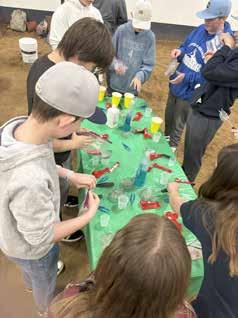
Ruff Patch Rescue and Draper City Animal Services are just two examples of local animal welfare organizations that help find homes for pets and dispel negative myths about black cats.
By Katherine Weinstein k.weinstein@mycityjournals.com
Black cats experience lower adoption rates and higher euthanasia rates compared to other colored cats in animal shelters across the U.S. On a local level, however, things look a bit brighter for this symbol of Halloween. Ruff Patch Rescue and Draper City Animal Services are just two examples of area animal welfare organizations who work to find homes for all kinds of pets and help dispel negative myths about black cats.
“We actually get a lot of people who love black cats,” Jocelyn Callahan, a volunteer with Ruff Patch Rescue, said. “Kitties with more unique coloring, like Siamese and calicos, capture peoples’ eyes and often get adopted first. But black kitties aren’t always last. I think that once someone has a black cat and realizes how great they are, they want to adopt another.”
Anyone who has had the spooky experience of encountering a black cat in the dark, its eyes shining in the shadows, can appreciate how the animals became objects of superstition centuries ago. The notion that black cats bring bad luck is fading but is still one of the reasons why they have a harder time being adopted. Their dark fur also makes it more difficult for people to discern their features in shelters and it can be challenging to photograph black cats for adoption websites.
Officer A. Hurst at Draper City Animal Services acknowledged that black cats are often the last to be adopted. “But then there are people who are specifically looking for black cats,” she said, adding that all of her own pets are black.
A popular misconception about black cats is that animal welfare organizations usually suspend adoptions of the animals during the month of October out of concern that they will be harmed or discarded after Halloween. “That is a myth,” Hurst stated.
The ASPCA, the Humane Society of the United States and Best Friends Animal Society have issued statements in recent years declaring that there is no evidence that adopting black cats at Halloween poses a greater risk to the cats than adopting them at any other time of the year. Many shelters actually use Halloween to promote the adoption of black cats. Hurst, who has worked in the field of animal welfare in


Utah and Colorado for over 20 years, said, “At the shelters I’ve worked for, we promoted the adoption of black cats at Halloween.” She added that some shelters give black cats Halloween-themed names to help get them adopted.
Callahan explained that Ruff Patch Rescue has a thorough vetting process for prospective adopters to help ensure that all pets go to homes where they will be safe and well taken care of. “We do have a contract in place,” she said. “We make sure that people are adopting for a reason. The whole family has to be involved.”
On a global scale, increased awareness of the plight of black cats in shelters is making a difference in how many find their forever homes. National Black Cat Appreciation Day, on Aug. 17 in the U.S. and National Black Cat Day, on Oct. 27 in the U.K., were founded to honor the value of black cats and dispel superstitions.
Last spring, NPR reported that adoptions of black cats increased thanks to the 2024 Academy Award-winning ani-
mated film, “Flow,” about a black cat who bonds with other animals to survive in a flooded world. “Anytime there’s a movie with a specific breed, there’s an uptick in adoptions,” Hurst said.
There are many pet rescue organizations and animal shelters in the Salt Lake Valley filled with cats and dogs of all colors and breeds who are seeking homes. Ruff Patch Rescue, founded in Riverton, consists of a network of volunteers who foster all kinds of animals for adoption. They hold regular adoption events on Saturdays at the Riverton PetSmart. Visit ruffpatchrescue.com to see pictures of available pets.
Draper City Animal Services oversees a no-kill shelter. Lost pets without identifying tags or microchips are put up for adoption after a standard holding period of five business days. They are kept until they are adopted or eventually given to a pet rescue group. For more information, visit www. draperutah.gov/living-in-draper-city/animal-services/. l
















The holiday season brings excitement, gatherings, and changes to our routines, and while we’re decking the halls, it’s important to consider how all the hustle and bustle impacts our dogs, too. That’s why we’re launching a special three-part series to help Pet Parents prepare their pups for the upcoming holidays, starting with Halloween!
• Costumes & Comfort: Make sure your dog enjoys the costume as much as you: check for signs of stress, keep it breathable, and avoid anything covering the face or paws.
• Doorbell Drama: Frequent knocking and doorbells can spike anxiety. Offer a calm retreat zone, like a crate, with a chew toy and white noise.
• Trick-or-Treating: Not all dogs are up for the hustle and bustle. For social pups, reflective gear and leash training are a must. Don’t forget, these weird “human traditions” may not make sense to your pup, so anxiety may be extra high.
• Candy Caution: Keep chocolate and xylitol (in sugar-free gum/candy) far out of reach — and inform guests, especially kids, not to feed human treats to your dog, even when they’re being extra cute.
If you need a place to help your pup get away from the Halloween chaos, Dogtopia has your back. Schedule your Meet & Greet and boarding now. Let your pup have fun with their friends, while you have fun with your family. Go to www.dogtopia.com and use the store locator to choose your closest daycare today.






Utah is in a paradox. We are known as one of the most social states in the nation, yet our residents also report some of the highest feelings of loneliness. State health surveys show that nearly one in four Utah teens in 2023 and about 6% of adults in 2021 said they often or always felt, “People are around me but not with me.” That’s a sobering reminder that being surrounded by people is not the same as feeling connected to them.
The U.S. Surgeon General defines loneliness as the distress of not having adequate meaningful connections, while social isolation is the objective lack of social roles, relationships or interaction. Both are harmful. Loneliness raises the risk of premature death by 26%, and social isolation by 29%. Utah data show youth are particularly vulnerable, with loneliness peaking around 10th grade. At the other end of life, older adults may report less loneliness, but many live alone or are less socially active, leaving them isolated—and at increased health risk— even if they say they feel fine.
It’s not all bad news. Among adults, reported loneliness has risen from 5% in 2019 to 16% in 2024. While that increase
Salt Lake County Councilmember|
District 3

seems alarming, some experts believe it reflects growing awareness. More people are recognizing that connection matters, which may encourage them to seek help or create new relationships. Meanwhile, Utah’s highest years for suicides (2017) and overdose deaths (2022) are behind us, with rates trending slightly down. We should not ignore loneliness, but perhaps our awareness is a hopeful step toward stronger, healthier communities.
Addressing loneliness requires all of us. Parents can set the stage at home by turning off screens, setting aside phones, listening closely, and modeling the conversations they hope their children will have with others. Simple family meals and one-on-one time give youth safe
spaces to share what they’re really experiencing.
Schools and businesses also play a role. Policies that encourage real connection—team projects, buddy systems, carpools, phone-free zones or mentoring programs—help students and employees build relationships that strengthen both well-being and performance. Identifying at-risk youth early and linking them with mentors can make a world of difference.
Local governments can create environments where connection naturally happens. Parks, libraries, recreation centers and public transportation all serve as “third spaces” where neighbors can meet. Programs like Salt Lake County’s Free Youth Rec Passes, summer events, farmers markets and free-fare zones lower barriers and invite people to gather. These aren’t just amenities; they are investments in the health and strength of our community.
Faith groups, sports teams and even traditions around food and gathering offer additional pathways. Whether it’s cheering together in the stands, sharing a meal or volunteering at church, these experiences weave the fabric of commu -
nity life. With creativity, we can support system-level changes that expand these opportunities in healthy ways.
In the end, the responsibility rests with each of us. Teens can choose to include someone sitting alone. Adults can prioritize friendships, check in on a neighbor or carve out time for family. Older adults can accept invitations or invite others into their routines. Each of these choices is small, but collectively they build the kind of community Salt Lake County is known for—caring, connected and resilient.
So I encourage you to pause and ask yourself: Am I truly connecting or just surrounded? Whether you are a student, a parent, a business leader or a retiree, you have the power to strengthen the web of relationships that hold us all together. In Salt Lake County, our greatest strength doesn’t come from policies or programs alone—it comes from people. When we choose connection, we choose health, hope and a brighter future for our community.

Back in the day, it didn’t take much to be labeled a witch. Did you own a cat? Witch. Did you have a birthmark? Witch. Did you use herbs, wear a cape, know how to read or lure children into your gingerbread-flavored home so you could eat them for dinner? Witch.
I’m just saying, the bar was low. Starting in the 1450s, witch hysteria swept across Europe, lasting for centuries. Intense warfare, hardship, famine and disease meant only one thing: it was time to burn the witches, because obviously.
Nearly 60,000 people were tried and killed as witches. More than 80% were women and 60% were over the age of 40. It was a gendercide that wiped out generations of women. Many were healers, midwives, widows and property owners.
They’d reached a time in their lives where they were fine being alone, with maybe a cat or two. They just wanted a nice broom, a boiling cauldron of soup and a Pinterest board of “Witchy Reads.”
Many women step into their power once they hit 40, but give women power and there’s going to be trouble. Killing the older generations meant wisdom was lost forever, which is probably why we have mini golf sets for the toilet.
Like Labubu and Meta (and just as

diabolical), witch trials were big business. Women were arrested, property was seized and people flocked to churches because no one wants to accidentally sell their soul to Beelzebub.
The witch trials also created a disconnection between women; a fear of gathering, the angst of being seen as a “coven” when all you wanted to do was watch the “Real Housewives of Salem.” Women stopped socializing because having a friend for tea could end in a hanging. (And you thought your book club was stressful.)
I’m a lover of all things witchy, a devotee of strong women using their magic for good. A witch is a woman who speaks truth to power, without shame. Imagine a combination of Dolly Parton, Oprah Winfrey and Ruth Bader Ginsburg, a woman so powerful even the Puritans would have been like, “Nope, not today.”
You see, a witch hunt creates a cul-

ture that undervalues women. When you describe women as shrill, chatty, feisty, mousey, sassy, emotional, slutty, hysterical, irrational or hormonal, those words strip away power.
How many of these words are used to describe men? Almost zero. At the worst, men get labeled as “grumpy,” and somehow that becomes “distinguished.”
There’s still a witch hunt going on today. Saying “women’s rights” to certain groups triggers frothing at the mouth and a call for the ducking stool.
Women want to be believed, heard and have the ability to live without violence or discrimination. We want affordable physical and mental health care, an equal wage and respect. Is that insane, deranged, unhinged or any other word used to lock women up in asylums, as recently as 1967?
A witch stands on her own. She embraces her age, her knowledge and her intuition, without fear. It’s not surprising that interest in witchy practices is rising. You can learn spells on TikTok, craft a voodoo doll on YouTube and banish your ex to the depths of Detroit using a candle, cayenne pepper and a squeeze of lemon. Science, obviously.
For women who have felt disenfranchised in their communities, religions and


workplaces, witchy practices are a way to find their power. It isn’t an excuse to turn women into barbecue.
I associate magic with creation, and women are the ultimate creators. Women are magic, able to run empires, sing lullabies and look fabulous in a cape. Do you need someone to change the world for the better? Find a witch.





